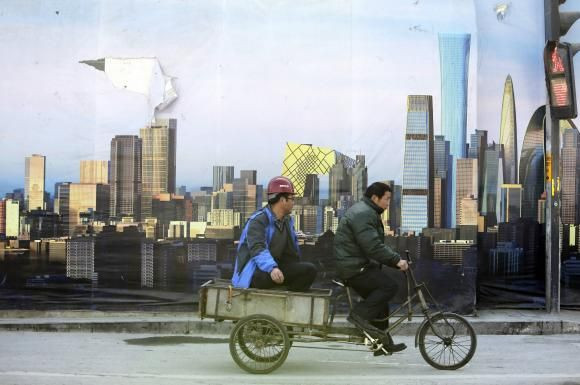China Posts Weakest Annual Growth In 24 Years, More Stimulus Expected

(Reuters) - China's economic growth held steady at 7.3 percent in the fourth quarter from a year earlier, slightly better than expected but still hovering at its weakest since the global financial crisis, keeping pressure on policymakers to head off a sharper slowdown.
The world's second-largest economy grew 7.4 percent in the whole of 2014, the National Bureau of Statistics said on Tuesday, undershooting the government's 7.5 percent target and the weakest expansion in 24 years.
It was the first since 1999 that the government had missed a yearly growth target for gross domestic product (GDP).
The China statistics bureau said at a news conference that the economy faces difficulties but it will keep growth within a "reasonable range."
A series of incremental market reforms and modest stimulus measures over the year did little to reverse a slowdown in the property market, and industrial overcapacity, slowing investment and erratic exports remain challenges for policymakers this year.
However, if Beijing's goal was allow a modest slowdown in the name of pushing painful reforms without setting off a collapse, then 2014 could be viewed as a qualified success; reported unemployment rates remain low and social unrest appears contained for now.
"This is the best possible miss you could have from a messaging standpoint," said Andrew Polk, economist at the Conference Board in Beijing.
"The government is saying, 'we're not married to this specific target, we missed it and we're okay.' That seems to me a quite positive development."
However, Polk added that the GDP figure was difficult to square with some of the negative underlying numbers.
On a quarterly basis, the economy expanded 1.5 percent in Oct-Dec from the previous three months, slower than expectations for 1.7 percent growth and 1.9 percent in July-Sept.
While growth in December industrial output and retail sales pipped expectations, power output rose only slightly from a year earlier, while fixed asset investment was a bit cooler.
Policymakers showed increasing signs of discomfort in the second half of the year as economic indicators began to consistently surprise on the down side, culminating in an unexpected cut to guidance lending rates by the central bank in November.
The People's Bank of China (PBOC) has also tinkered with the money supply while refraining from a full cut to reserve requirement ratios (RRR) at banks.
A reduction in RRR could flood the market with some 2.4 trillion yuan ($386.27 billion) in fresh cash when accounting for the multiplying effect of fresh loans, but some worry the money could simply be rerouted into sustaining the very industrial overcapacity and property bubbles that regulators have been fighting to suppress.
However, the targeted easing measures have yet to show much effect in bringing down financing costs, and thus many now see further interest rate cuts and/or lower reserve requirement ratios (RRR) as unavoidable if conditions don't improve soon.
Beijing has ruled out massive stimulus as China is still struggling to digest a mountain of debt left over from the 4 trillion yuan ($643.19 billion) stimulus package in 2009.
MODEST EXPECTATIONS
Economists polled by Reuters had expected fourth-quarter growth to cool to 7.2 percent from 7.3 percent in the third quarter, hitting the lowest since the first quarter of 2009, when growth slowed sharply to 6.6 percent.
Factory output rose 7.9 percent in December from a year earlier, versus expectations for a 7.4 percent increase and November's 7.2 percent, other data showed on Tuesday.
Retail sales rose 11.9 percent in December from a year earlier, above analysts' predictions of 11.7 percent.
Fixed asset investment, a key growth driver, climbed 15.7 percent in the whole of 2014 from the previous year, below forecasts for a 15.8 percent rise and hovering near a 13-year low.
China's stock markets, which posted their sharpest drop since 2008 on Monday, were up after the announcement, with the Shanghai Composite Index rising 1.5 pct and futures contracts for the CSI300 Index recovering across the board.
Expectations of further stimulus measures made China stocks the top performing major market in the world last year, with gains of over 50 percent.
© Copyright IBTimes 2024. All rights reserved.




















